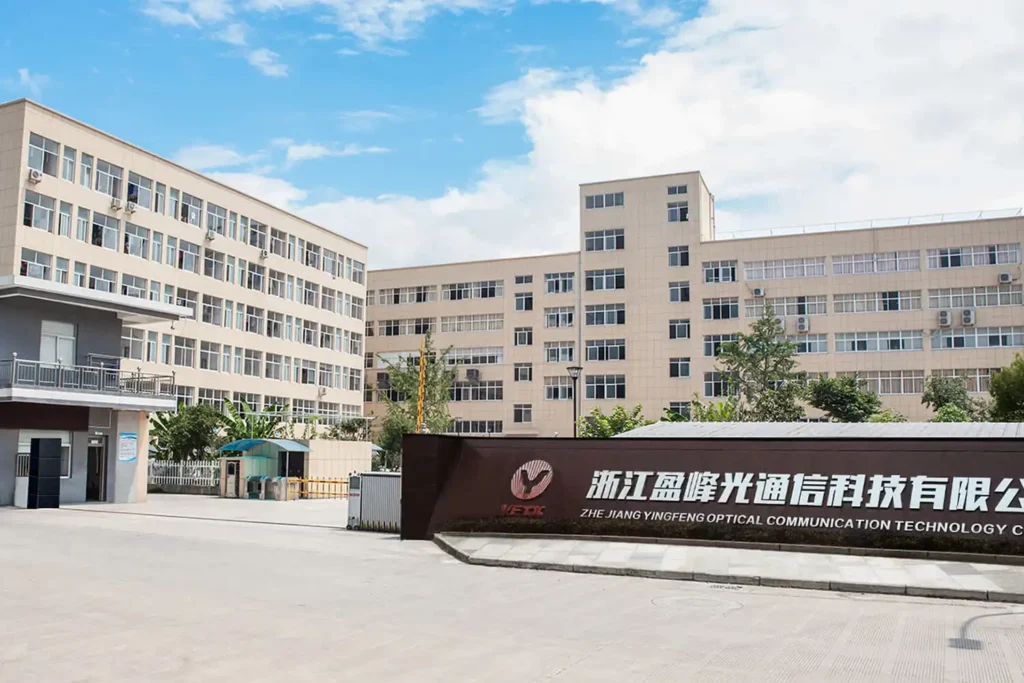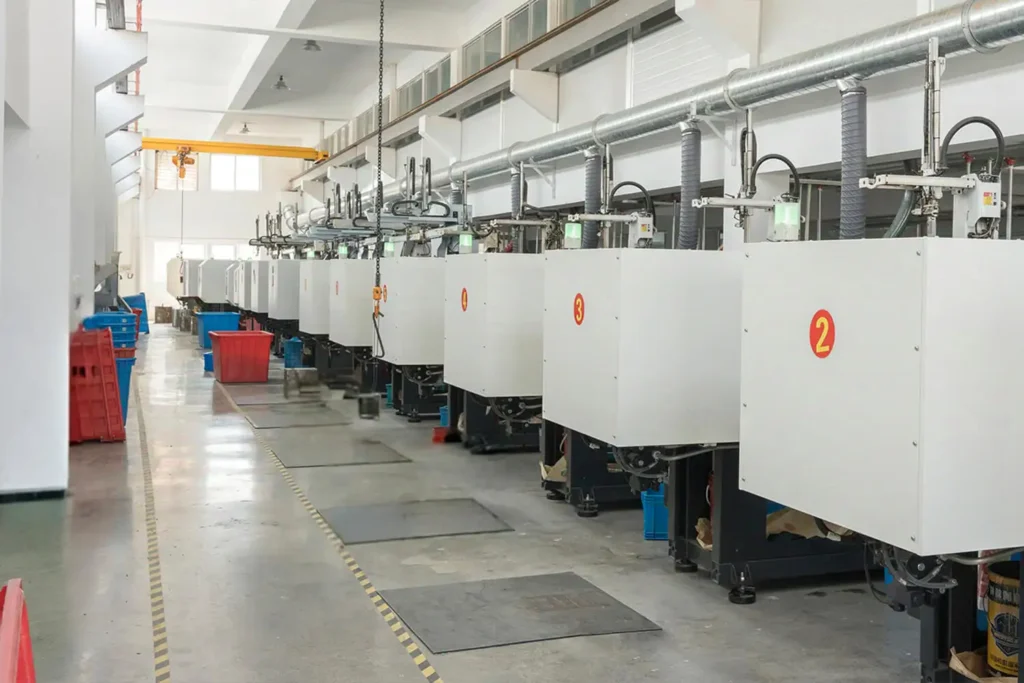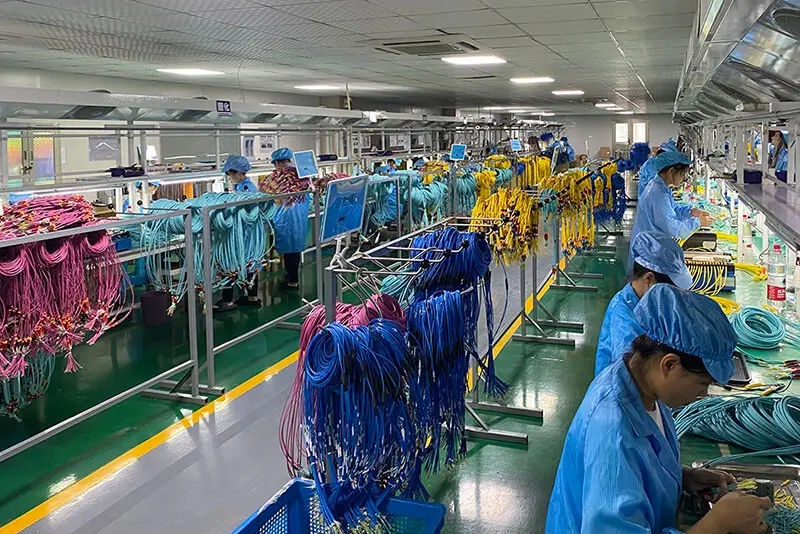If you’re just stepping into the world of fiber optics, all the technical terms and abbreviations can feel overwhelming. That’s why I created this fiber glossary series — to help you understand what these terms really mean, in the simplest way possible.
I’ll explain everything from an industry insider’s point of view, using real photos whenever I can (not just fancy renders). I also avoid overly complex explanations, keeping the language clear and direct, so you can be confident you’ll understand the real meaning of these terms after reading.
Today, we’re going to talk about: OLT (Optical Line Terminal)
TABLE OF CONTENTS
So What Is An OLT?
Let’s keep it simple:
An OLT (Optical Line Terminal) is the main control device in a fiber-to-the-home (FTTH) or fiber access network. It’s usually located in a telecom provider’s central office or data center, acting as the starting point of the fiber network.
If we compare a fiber network to a train system:
- The OLT is the train station manager — it sends out trains (data) on schedule, decides which track they take, and manages all communication between the passengers (users) and the central hub.
In technical terms, the OLT’s job is to:
- Convert standard data signals from the service provider into optical signals for transmission over fiber.
- Manage multiple connections to end users through optical splitters and ONUs/ONTs.
- Handle upstream and downstream data flow efficiently.
Note: Many new terms are cited here, I’ll explain them in other glossary entries soon, and link them back here for easy reference.

Where Does an OLT Fit in a Network?
An OLT is part of a Passive Optical Network (PON) — specifically at the service provider end. The basic layout looks like this:
- OLT – Installed at the central office (CO) or headend.
- ODN (Optical Distribution Network) – Includes fiber cables, splitters, and distribution points.
- ONU/ONT – Located at the customer’s premises (home, office, building).
The OLT connects to multiple ONUs/ONTs through a single optical fiber, using splitters to distribute the signal. This is what makes PON technology cost-effective — one OLT port can serve dozens of users.

Main Functions of an OLT
The OLT isn’t just a “transmitter” — it’s a smart device with several responsibilities:
Signal Conversion
- Converts Ethernet data into optical signals (downstream) and vice versa (upstream).
Traffic Management
- Allocates bandwidth among users.
- Avoids data collisions using Time Division Multiple Access (TDMA).
Service Provisioning
- Manages user authentication, network configuration, and service activation.
Monitoring & Maintenance
- Detects faults, monitors signal quality, and enables remote troubleshooting.
Security
- Encrypts downstream data to prevent unauthorized access.
Why Is the OLT Important in Telecommunications?
Without the OLT, a PON network can’t function. It’s the brain of the operation, making sure:
- Each user gets the right amount of bandwidth.
- Data flows in both directions without interference.
- Service providers can remotely configure and manage connections.
- Upgrades (like increasing speeds from 1G to 10G) can be done without replacing every user’s device.
In short, the OLT ensures efficiency, scalability, and reliability in modern telecom networks.
Types of OLTs in Networking
While all OLTs serve the same basic role, they come in different designs:
1. Rack-Mount OLTs
- Installed in 19-inch racks in data centers.
- High capacity, multiple slots for PON line cards.
2. Compact OLTs
- Smaller size for limited space deployments.
- Often used by small ISPs or for dedicated projects.
3. Outdoor OLTs
- Weatherproof enclosures for deployment in field cabinets.
Additionally, OLTs can support different PON standards:
- GPON (Gigabit PON) – Up to 2.5 Gbps downstream.
- XG-PON – 10 Gbps downstream.
- XGS-PON – Symmetrical 10 Gbps.
- NG-PON2 – Multi-wavelength for higher capacity.

OLT in Real-World Applications
You’ll find OLTs in:
- FTTH networks for residential broadband.
- FTTB/FTTO for commercial buildings.
- Campus networks where fiber is distributed to multiple buildings.
Rural broadband projects connecting remote areas.
For example, a telecom operator may install a 16-port GPON OLT in its central office — each port serving up to 64 users, meaning a single OLT could connect over 1,000 households.
OLT Price and Cost Factors
People often search for “OLT price” — but the cost can vary greatly depending on:
- PON standard (GPON is cheaper than XGS-PON or NG-PON2)
- Number of ports (more ports = higher price)
- Brand and features (Huawei, ZTE, Nokia, FiberHome, etc.)
- Included accessories (power supplies, line cards, management software)
As a rough guide:
- Compact GPON OLT: Few hundred USD.
- High-capacity chassis OLT: Several thousand USD.
However, in large deployments, the cost per user is low because many users share the same OLT hardware.
FAQ: Common Questions About OLT
What’s the difference between OLT and ONU?
OLT is at the provider side, managing the entire network.
ONU (Optical Network Unit) is at the customer side, converting optical signals to usable Ethernet.
Can one OLT support different PON standards?
Some OLTs are modular and can support multiple PON types with different line cards, but most are designed for a specific standard.
How many users can one OLT port handle?
Typically up to 64 users per port in GPON, and up to 128 in some higher-capacity standards.
Is OLT only for internet service?
No — it can also deliver IPTV, VoIP, video surveillance, and other services over the same fiber.
How is an OLT managed?
Through a network management system (NMS) or CLI/web interface, allowing remote configuration, monitoring, and firmware upgrades.
In Summary
An OLT (Optical Line Terminal) is the central control hub in a fiber optic PON network. It connects the service provider to hundreds or even thousands of users through a single device, ensuring fast, reliable, and secure data delivery.
Without the OLT, fiber access networks simply wouldn’t work. It’s the technology quietly powering your internet, streaming, video calls, and more.
Still Have Questions?
If you’re still unsure about something, feel free to reach out.
Want to explore more fiber optic terms? Head over to our blog section.
If the term you’re looking for isn’t covered yet, let me know — I’ll add it to the priority list!
And lastly — if you’re a telecom provider, network operator, or involved in fiber infrastructure development and looking for a reliable partner in fiber optic components — feel free to contact to us.









